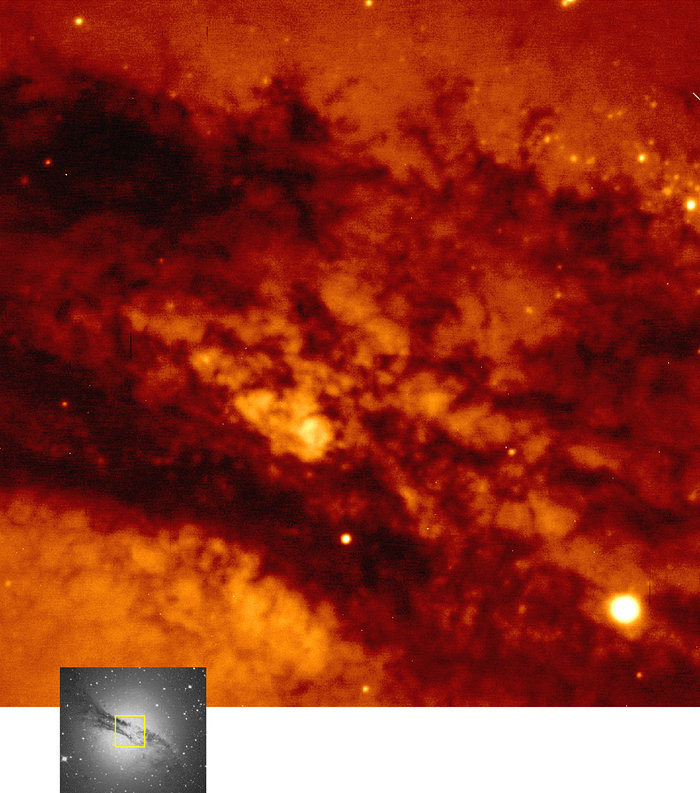The dust band in Centaurus A
Centaurus A is the closest active elliptical galaxy and one of the strongest radio sources in the sky. This image shows part of the dust lane that obscures the central regions of the galaxy. This complex structure is believed to be the result of the recent collision between the old elliptical galaxy and a dwarf, gas-rich galaxy. Intense star formation is taking place within the violently stirred gas during the merging event.
This image was taken with the Test Camera of the VLT UT1 telescope on May 22, 1998, during a short, 10 sec exposure through a red filtre to demonstrate the great light collecting power of the 53 m 2 mirror of the VLT UT1. It shows a great deal of fine details. The image quality is about 0.49 arcsec.
The insert shows a complete view of Centaurus A taken with another telescope. The brightest stars are foreground objects located within our own galaxy, but clusters of recently formed stars are visible at the edge of the dust lane.
With powerful infra-red detectors to be mounted on the VLT later this year, astronomers will soon be able to probe deep into the dust lane, infrared light being less absorbed by dust than red light.
Källa:ESO
Om bilden
| ID: | eso9820f |
| Typ: | Observation |
| Publiceringsdatum: | 27 maj 1998 |
| Relaterade pressmeddelanden: | eso9820 |
| Storlek: | 1371 x 1554 px |
Om objektet
| Namn: | Centaurus A, NGC 5128 |
| Typ: | Local Universe : Planet : Satellite Local Universe : Galaxy : Component : Central Black Hole |
| Avstånd: | 13 miljon ljusår |
| Kategori: | Galaxies Quasars and Black Holes |
